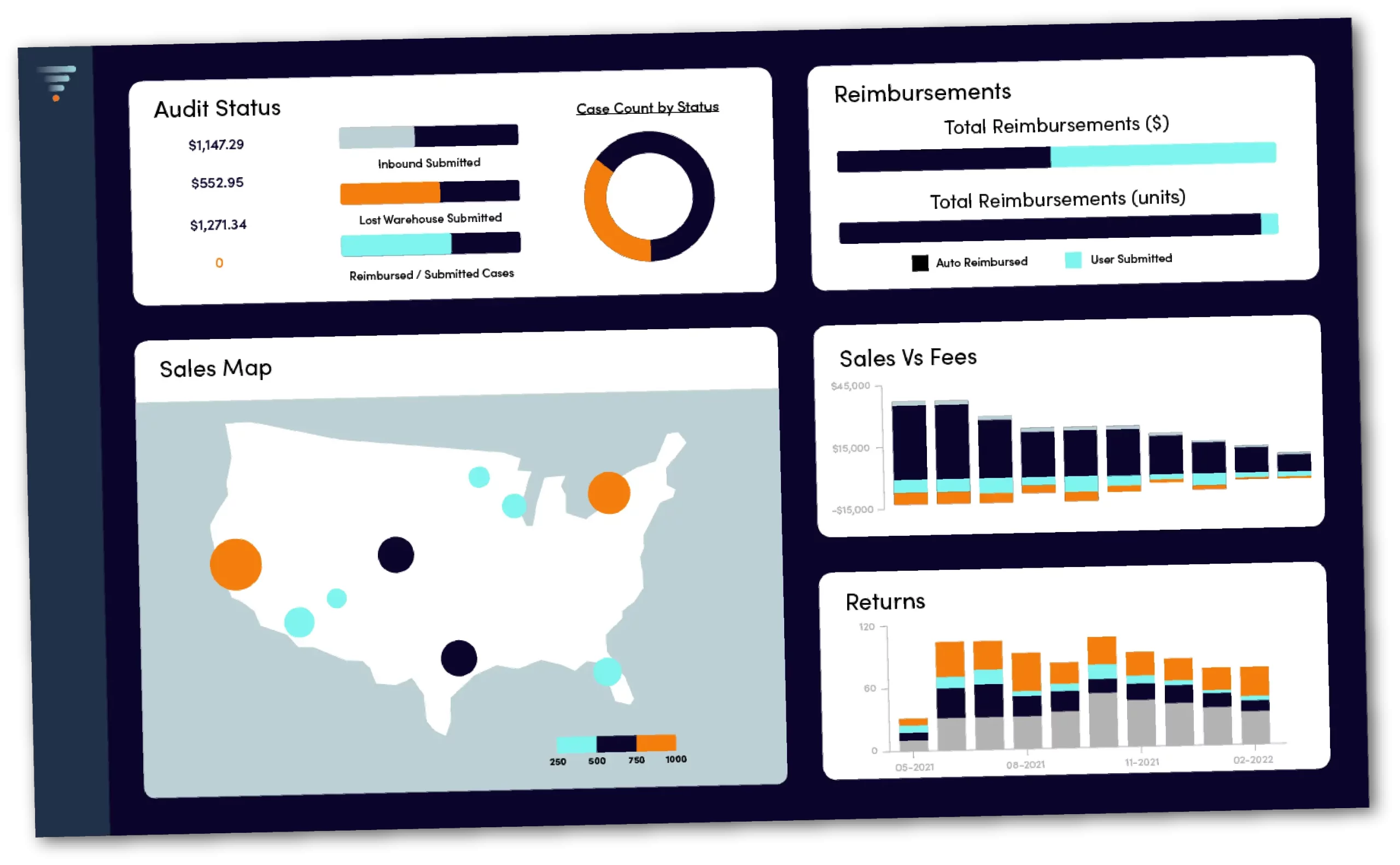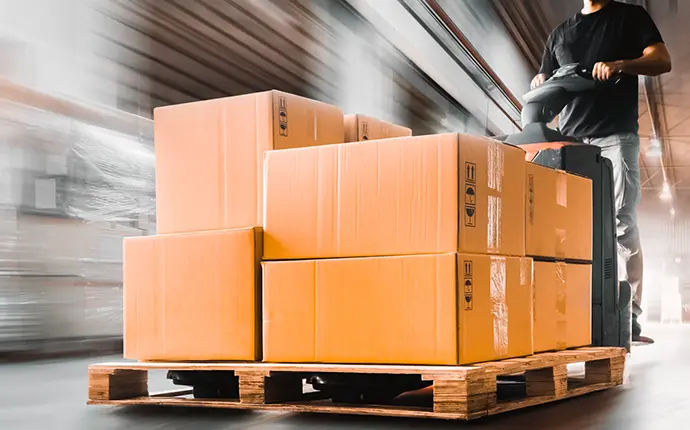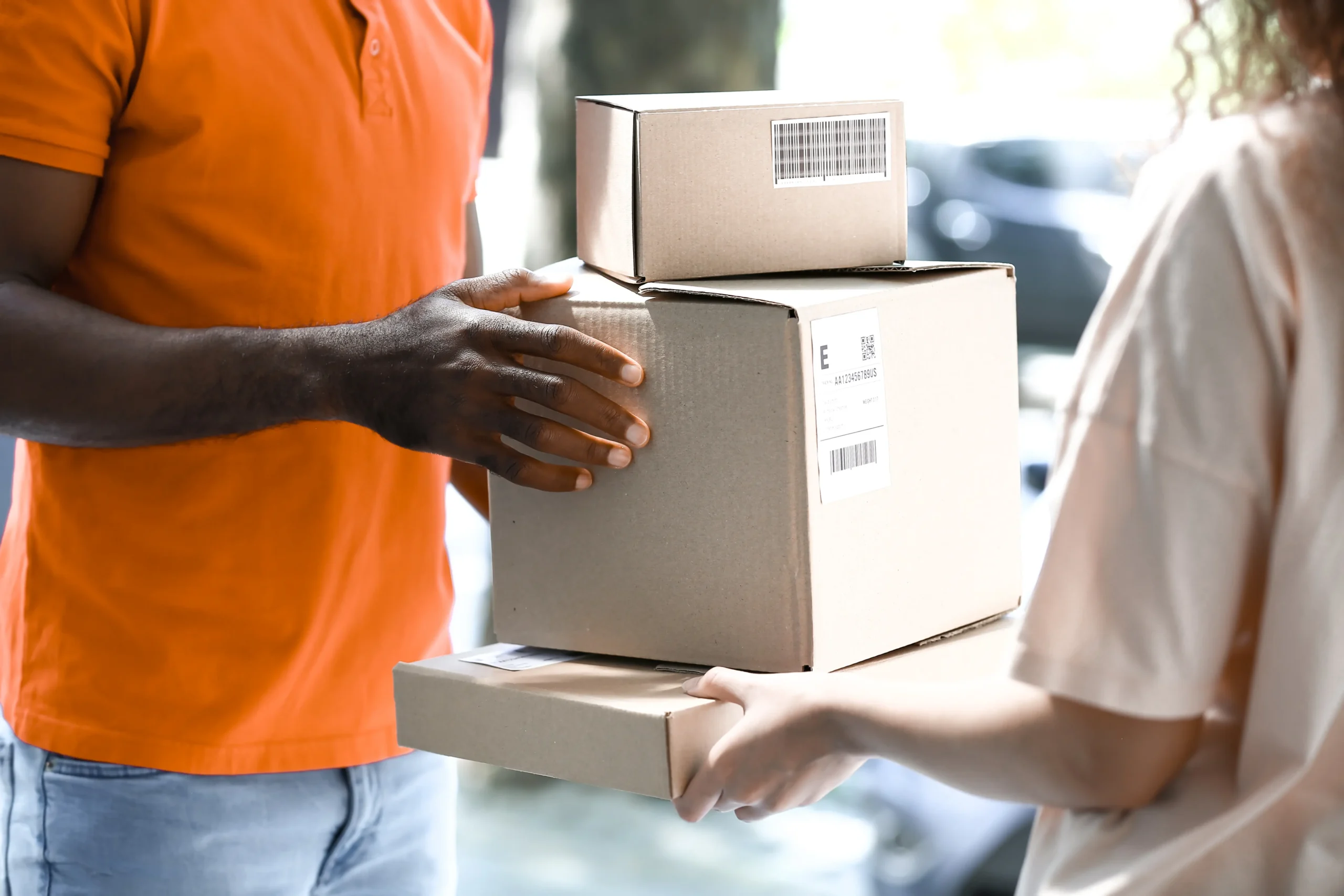What is Amazon FBA?
Amazon FBA, also known as Fulfillment by Amazon, is a fulfillment solution that provides inventory storage, packaging, order fulfillment, customer service, and shipping services to Amazon sellers. The FBA program offers an excellent way for many sellers to deliver their products to customers faster without worrying about day-to-day fulfillment operations.
Amazon is the largest eCommerce marketplace in the world, garnering 5.3 billion visits in July 2022. It offers millions of items across each product category. Considering 73% of Amazon businesses choose FBA to sell, Amazon FBA warehouses are subjected to strict guidelines to handle the extraordinary amount of inventory they receive.
In this article, we’ll go over the step-by-step process of shipping FBA inventory to Amazon fulfillment centers, and discuss ways to optimize your FBA shipments.
What is the Amazon FBA shipping process?
You want to properly package, label, and prepare all products for safety. This will also streamline the receiving and shipping process. The rules for sending products to Amazon can be complicated for first-time FBA sellers, and any mistake will send your inventory to “investigation”, delaying replenishment for hours or even days.
Understanding how to set up your shipping plan is crucial before shipping your products to Amazon’s fulfillment centers.
Preparing an error-free shipment plan can help you ship products faster and avoid unexpected Amazon charges. An Amazon shipping plan is a set of guidelines you create in your Amazon Seller Account. It tells Amazon how much of your inventory you want to store at different Amazon fulfillment centers across the country and your preferred shipping method.
Here are the steps of the Amazon FBA shipping process:
- Log in to your Amazon Seller Central account, go to “Manage Inventory” and find your product listing.
- Select the product(s) you want to send to an FBA fulfillment center using the checkbox on the left.
- Click “Edit” and under the drop-down menu, click “Send/Replenish Inventory” and select “Create a New Shipping Plan.”
- Enter your “ship from address.” The ship from address is the warehouse from which Amazon will pick up your inventory.
- Choose whether you want to ship “individual products” or “case-packed products.”
- Select the “individual products” option if your shipment contains one or more products of varying conditions and quantities.
- Alternatively, choose the “case-packed products” option if you are shipping products with the same SKU. Specify the number of cases and units in each case.
- Click “Continue to Shipping Plan” to carry on with the shipment creation workflow.
- After you’ve added your product to the shipping plan, select the “All Products” tab to review all the items you want to ship into FBA. Next, choose the number of units you’ll be sending using the “Units” column.
- Specify the number of cases and units in each case you want to ship.
- In the future, if you send in the same products, you can duplicate this plan and adjust the number of units to save time.
- Once you’ve made your adjustments, click “Continue.”
- You can view the prep guidelines for products with known preparing requirements. To do this, from the “Prepare Products” section, click on the “Prep required” tab.
- Here you can view prep requirements for various product categories, including fragile, liquids, textiles, baby, sharp, small, and adult.
- Packaging and prep methods required to ship your products safely to Amazon may include bubble wrap, poly bags, shrink wrap for pallets, and tape.
- You can check out the products that don’t have known prep requirements by clicking the “Prep may be required” tab.
- If your supplier or a freight forwarder is shipping your items directly to Amazon, make sure they are aware of Amazon packing guidelines and shipping and routing requirements.
- Amazon also offers its own FBA prep service, however, most Amazon FBA sellers avoid using the feature. The reason is extremely high fees that can increase the total shipping cost and impact your margins.
- If you want Amazon to prep your products, choose “Amazon” in the “Who preps” drop-down menu. Alternatively, if you’ll be preparing the product yourself, select the “Merchant” option.
- Amazon only preps products with universal product codes (also called UPC Codes).
- FBA products not eligible for commingled, stickerless inventory must have Amazon shipping labels to be accepted by Amazon’s fulfillment centers.
- You can view a list of products that require ASIN, FNSKU, EAN, or UPC barcodes in the “Labeling required” section.
- If your product FNSKU starts with “B00”, apply existing manufacturer barcodes (ISBN, EAN, or UPC). If the barcodes are not visible or scannable, you can use the Amazon-provided “B00” label. When using Amazon labels, make sure that manufacturer barcodes are properly covered.
- If your product FNSKU starts with “X00”, use the Amazon-provided label by selecting the “Merchant” option.
- Alternatively, select “FBA Label Service” under “Who Labels?” if you want Amazon to apply shipping labels for you for a per-unit fee ($0.55 per item).
- If you need, you can also you can switch your FBA Product Barcode Preference between manufacturer and Amazon by:
- Go to your Seller account, and click “Fulfillment” under “Settings”.
- Click the “Edit” button next to the FBA Product Barcode option.
- Choose “Enable” to select the Manufacturer barcode or “Disable” to apply Amazon barcode.
- In the “Review Shipments” section, you can view and accept your shipping plan.
- Amazon selects fulfillment centers based on the products you ship and their destination. Your inventory is assigned the “Distributed Inventory Placement” option by default, meaning your shipment is split and sent to multiple Amazon receiving centers in different locations. This allows Amazon’s fulfillment network to increase shipping speeds and reduce delays.
- Alternatively, you can select the “Inventory Placement Service” that allows FBA businesses to send their inventory to a single Amazon fulfillment center. If you want to send your shipments to a single FBA location, navigate to Settings > Fulfillment by Amazon > Inbound Settings and click “Edit”.
- Amazon charges a per-unit fee if you opt into this service (Based on May 2023 guidelines).
- For standard-size products,
- $.30 for package weighing 1 lb or less
- $0.40 for package weighing 1-2 lbs
- $0.40 + $0.10/lb above the first 2 lbs
- For oversize products
- $1.30 for items weighing 5 lbs or less
- $1.30 + $0.20/lb above the first 5 lb for items weighing over 5 lbs
- For standard-size products,
- Next, you’ll need to select the shipping service (e.g., UPS, USPS, etc.) and choose your delivery method, i.e.,small parcel delivery or less-than-truckload (LTL)
- After that, choose the units per box, the number of boxes you are shipping, box weight, and box dimensions. Click on the “Calculate” button to view your shipping cost.
- The last step is to choose your shipping date and create and print labels. Make sure that both barcodes on the shipping labels (i.e., Amazon and shipping carriers such as USPS) are visible on the package before handing them over to the carrier.
3 Tips to Optimize Your Amazon FBA Shipments
Let’s go over some of the best strategies that you can use to increase the speed and reduce the cost of your Amazon FBA shipments.

Get Back the Money You’re Owed from Amazon
1. Consider Shipping Case-Packs
Most retailers receive products from manufacturers in case-packs, and it is essential to keep track of the pack and the individual items in the pack.
When you implement case-packs in your inventory management workflows, you can quickly track received packs and their individual components. This way, you’ll be able to display accurate inventory levels on your store page and other selling channels, resulting in a great experience for your customers.
Moreover, Amazon’s Distributed Inventory Placement Program requires you to split your inventory and ship them to different fulfillment centers. This can extend the time it takes for your products to be available for purchase. You can avoid this delay by actively tracking inventory levels and shipping case-packs as early as possible before running low on stock.
2. Ship Inventory to One Fulfillment Center
Amazon’s Inventory Placement Service is another option that allows sellers to send their inventory to a single Amazon fulfillment center. From there, Amazon splits your inventory based on the product type and the location you are sending from. Then, Amazon ships your inventory to different fulfillment centers.
Inventory Placement is great if you want to send a few boxes of inventory. This way, you don’t have to split a small shipment into multiple FBA shipments, as it becomes complicated and expensive to fulfill orders.
3. Go with an Amazon-Partnered Carrier
Shipping inventory to Amazon’s receiving centers isn’t cheap. However, the Amazon Partnered Carrier Program (APCP) allows you to ship packages to Amazon fulfillment centers at lower rates that Amazon negotiates with carriers like FedEx and UPS. In addition to lower FBA fees, APCP speeds up the shipping process and deliveries as carriers prioritize partner sellers.
Monitor and protect your inbound shipments with Sifted
Amazon offers an FBA shipping plan workflow that streamlines the process of sending products to Amazon FBA fulfillment centers.
Sifted’s Marketplace Intelligence (MI) software audits your Seller Central account daily to identify, track and recover reimbursements owed to you when Amazon makes mistakes with your…
- Inbound Shipments: Mistakes can happen before your products even get into the warehouse. MI identifies miscounted inbound shipments for reconciliation.
- Warehouse Inventory: Our dashboard performs daily multiple SKU reconciliations to identify mistakes that happen in FBA warehouses (i.e. missing items, damaged products, lost products, or unauthorized destruction.)
- Customer Returns: Sifted verifies proper crediting by Amazon for every return on your behalf. Return mistakes we audit for:
- Incorrect SKU reimbursed to seller
- Unreturned by buyer
- Incorrectly received
- Lost in shipping
- Wrong item returned
- And more
Ready to recover your losses and boost your profits on Amazon? Sign up for Marketplace Intelligence for free!











